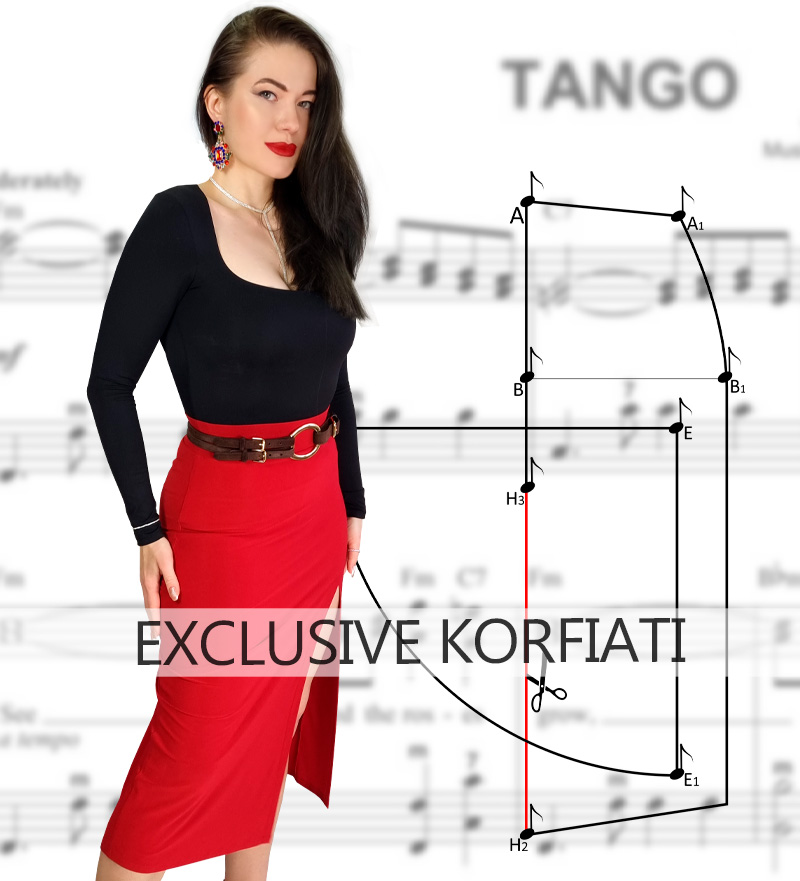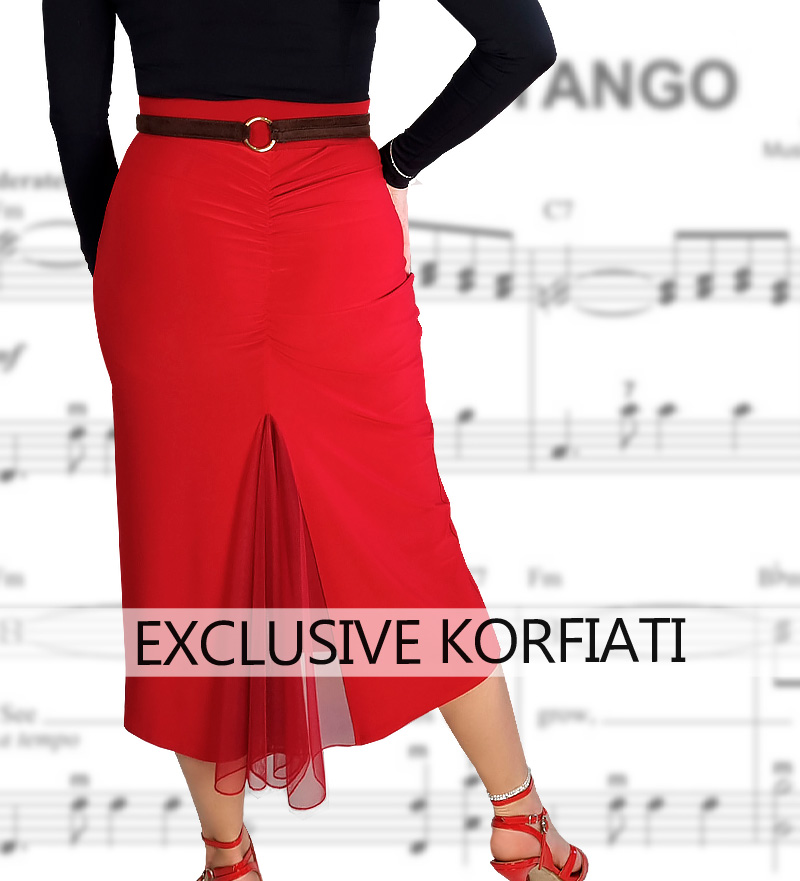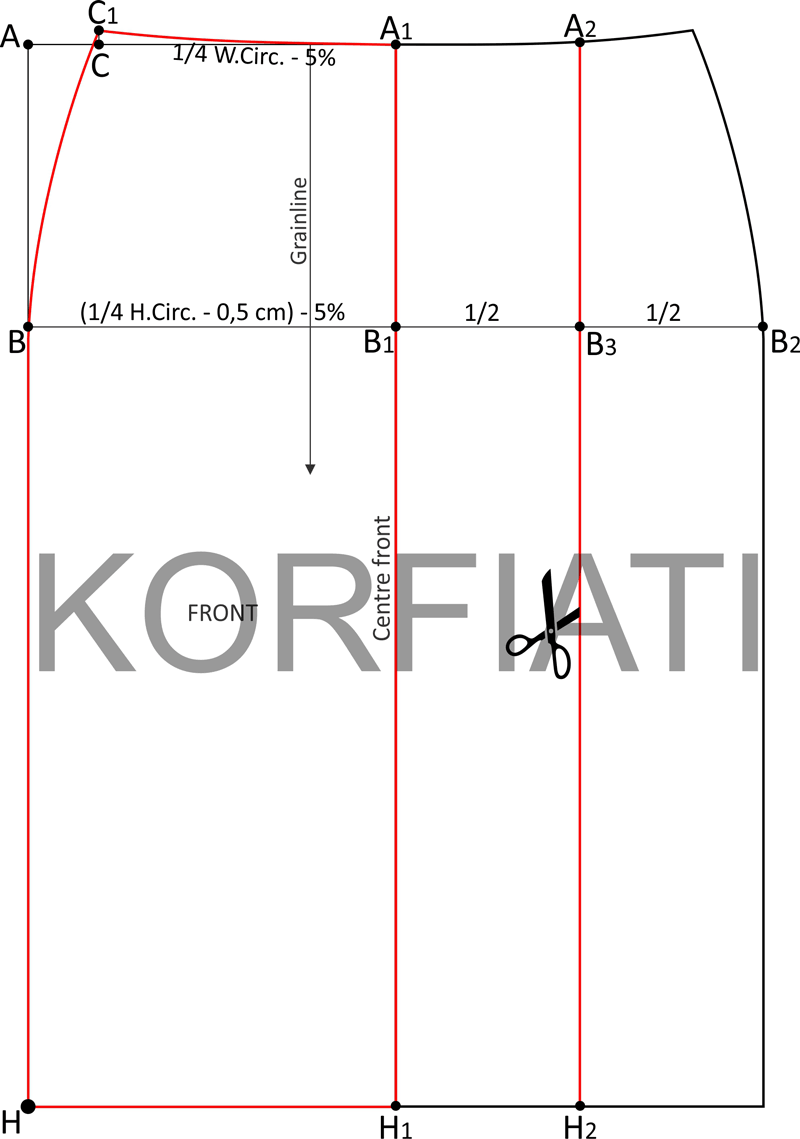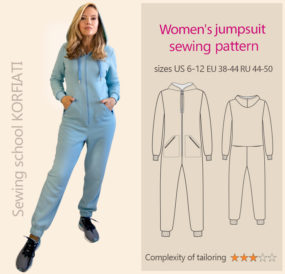In the Rhythm of Tango! Crafting a Pattern of a Skirt for Dances
Where does passion, grace, and complete freedom of movement intertwine perfectly? Of course, in dance! And this dance – the tango – is one of the most expressive and captivating dances in the world. Millions of people around the globe dance the tango, and even more dream of mastering this art, as it is a dance you fall in love with instantly and for life. Whether you are already immersed in the magic of tango or simply dream of becoming part of this great tradition, our latest sewing project will surely delight you – both inspiring and unique. As you’ve probably guessed, it’s all about a skirt for tango.
How to Sew a Tango Skirt
As we know, tango doesn’t tolerate limitations, but it does require costumes that can reveal the full potential of movement! That’s why we’ve developed a pattern for a bright skirt, which is very easy to sew! This model not only accentuates your femininity but will also make you a true queen of the dance floor. The tango skirt pattern is in this lesson.
A Bit of History. Features of Tango Dance Costumes
In the early 1900s, the tango took Europe by storm and became a symbol of beauty, passion, and boldness, capturing the attention of not only dancers but also Fashion Houses. And of course, tango influenced fashion trends, requiring new approaches to costume creation.
In the early 1910s, fashion was focused on long, narrow skirts, but tango demanded complete freedom of movement, especially for the legs. This led to the emergence of new skirt designs: shortened in the front, with slits and wedge inserts, as well as with wraps and overlapping hems.
Irene and Vernon Castle, iconic artists of that time and popularizers of tango, released a book “Modern Dance” in 1914, where they recommended that dancers wear comfortable and light costumes suitable for dancing. Irene suggested replacing traditional, stiff outfits with loose, elastic garments that allowed for unrestricted movement – skirts and blouses with loose sleeves or dresses that gracefully followed the body’s line, emphasizing feminine shapes. Fashion Houses of that time responded to the dancers’ needs and began developing costumes specifically for tango.
Today, as tango fashion is making a comeback, it’s important that costumes not only provide comfort for the dancer but also emphasize style. By creating such costumes yourself, you can not only look elegant and luxurious but also become a true ambassador of dance culture.
Tango Skirt in Detail
The skirt model presented in the article has the following design features:
- Skirt length from the waist – approximately 75 cm.
- The model has a closely fitting cut, with no fastenings.
- The waistband is made with wide elastic.
- The front panel features a high slit, 2 cm wide.
- The back panel: at the top – gathering on a narrow elastic band, at the bottom – a set-in shuttlecock made of knit mesh fabric.
- The model is unlined and is made only from highly elastic knit fabrics.
Pattern of Tango Skirt
To create a pattern for a tango skirt, you need to take the following measurements:
- W.Circ. (Waist circumference)
- H.Circ. (Hip circumference)
- H.H. (Hip height)
- S.L. (Skirt length) = 75 cm.
Important! The skirt model presented in this lesson is sewn only from elastic knit fabrics.
Front Pattern of the Skirt
Draw a rectangle:
- AH = 75 cm.
- AA1 = BB1 = NN1 = ¼ HCirc. – 0,5 cm – 5% (stretch factor of knit fabric).
- A1C = ¼ WCirc. – 5% (stretch factor of knit fabric).
- Waistline: CC1 = 0,5 cm (side seam rise). Connect points A1-C1 with a smooth line.
- Side seam: Connect points C1-B with a smooth line.
Tip! The stretchability of knit fabric depends on its density, fiber structure, and the way the material is woven. Therefore, the negative ease allowamce used in the skirt pattern design may vary. For more details, see: How to Calculate the Stretch Factor of a Material
Modeling the Front Slit. Redraw the entire front half of the skirt on paper. Divide the segment B1B2 in half: B1B3 = B2B3. From point B3, draw a vertical segment A2-H2. Cut the pattern along the line A2H2.
Allowance for the Slit. Add the slit overlap to the side of the front panel: A2D = H2D1 = 2 cm. From point A2, measure 35-40 cm down and mark the horizontal end of the seam (the height of the slit can vary depending on personal preferences).
Important! When cutting the front panel of the skirt, it is important to correctly lay the pieces on the wrong side of the fabric so that the slit in the finished garment is on the left side of the front. When cutting, add 1 cm seam allowances to both front pieces, and 2 cm seam allowances along the slit and at the bottom of the pieces.
Back Pattern of the Skirt
Draw a rectangle:
- AH = 75 cm.
- AA1 = BB1 = HH1 = ¼ of the Hip circumference + 0,5 cm – 5% (elasticity coefficient of knit fabric).
- AC = ¼ of the Waist circumference – 5% (elasticity coefficient of knit fabric).
Waistline. CC1 = 0,5 cm (side seam rise). Connect points A and C1 with a curve line.
Side line. Connect points C1 and B with a smooth curve, and extend the line straight to point H1.
Lengthening the Back Panel:
- AA2 = 3 cm
- HH2 = 4 cm.
Shuttlecock of Knit Mesh:
The shuttlecock, which is sewn into the center of the back panel of the skirt, is cut from knit mesh fabric and has a half-circle form.
Center Back Split:
- H2H3 = 45 cm.
- Draw the shuttlecock detail as shown in Fig. 6. The radius length for the shuttlecock is R = EE1 = H2H3 = 45 cm.
Elasticated Waistband:
Draw a rectangle MM1NN1 as shown in Fig. 6:
- MN = M1N1 = 14 cm (the finished waistband width is 6 cm).
- MM1 = NN1 = Waist circumference minus 5-10%.
How to Cut a Skirt for Dance
To make the skirt, you will need:
- 1,0 m of knit fabric, 145 cm wide
- 0,35 m of 0,5 cm wide elastic for the back panel
- 0,8 m of 7 cm wide elastic for the waistband
- Madeira Aerofil sewing threads, No. 120
- Sewing equipment needed for making the skirt: sewing machine and overlocker
It is recommended to sew the skirt using a 4-thread overlock stitch. The lower edge of the knit mesh shuttlecock is finished with a rolled seam. The seam allowances along the slit and the bottom of the skirt are topstitched with a straight stitch on the sewing machine, using a stitch length of 2.4 mm.
Sewing tutorial: How to sew a Skirt for Dance
There are more patterns and ideas for creativity on the site of the Anastacia Korfiati Sewing School! Subscribe free!
You might be interested in:
- Women’s Measurements Charts
- Basic straight skirt
- Ease allowance of garments
- Longsleeve – simple sewing pattern
















How do I download or purchase the tango skirt pattern,
There is the instruction on how to design a tango skirt pattern in the article.